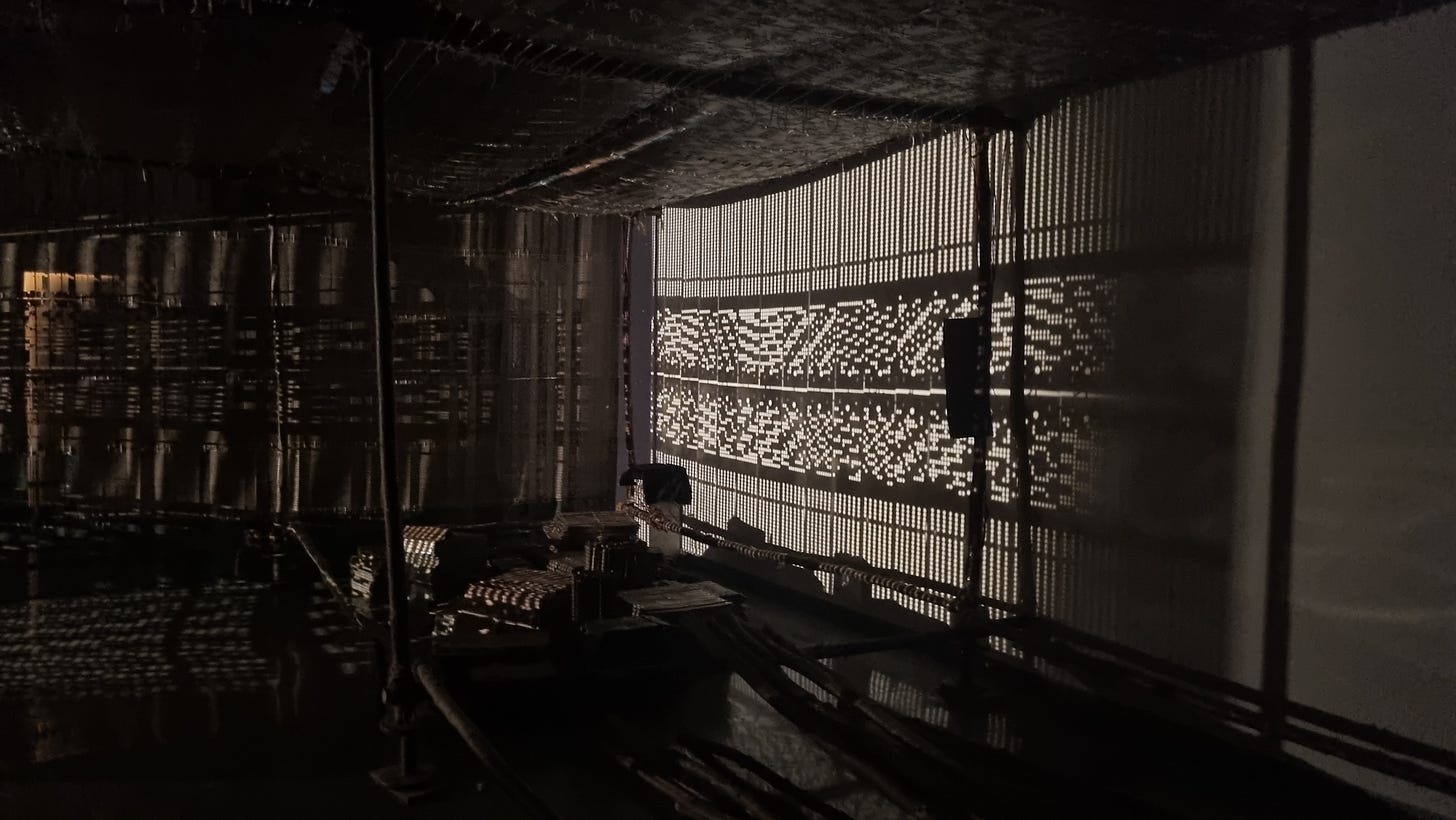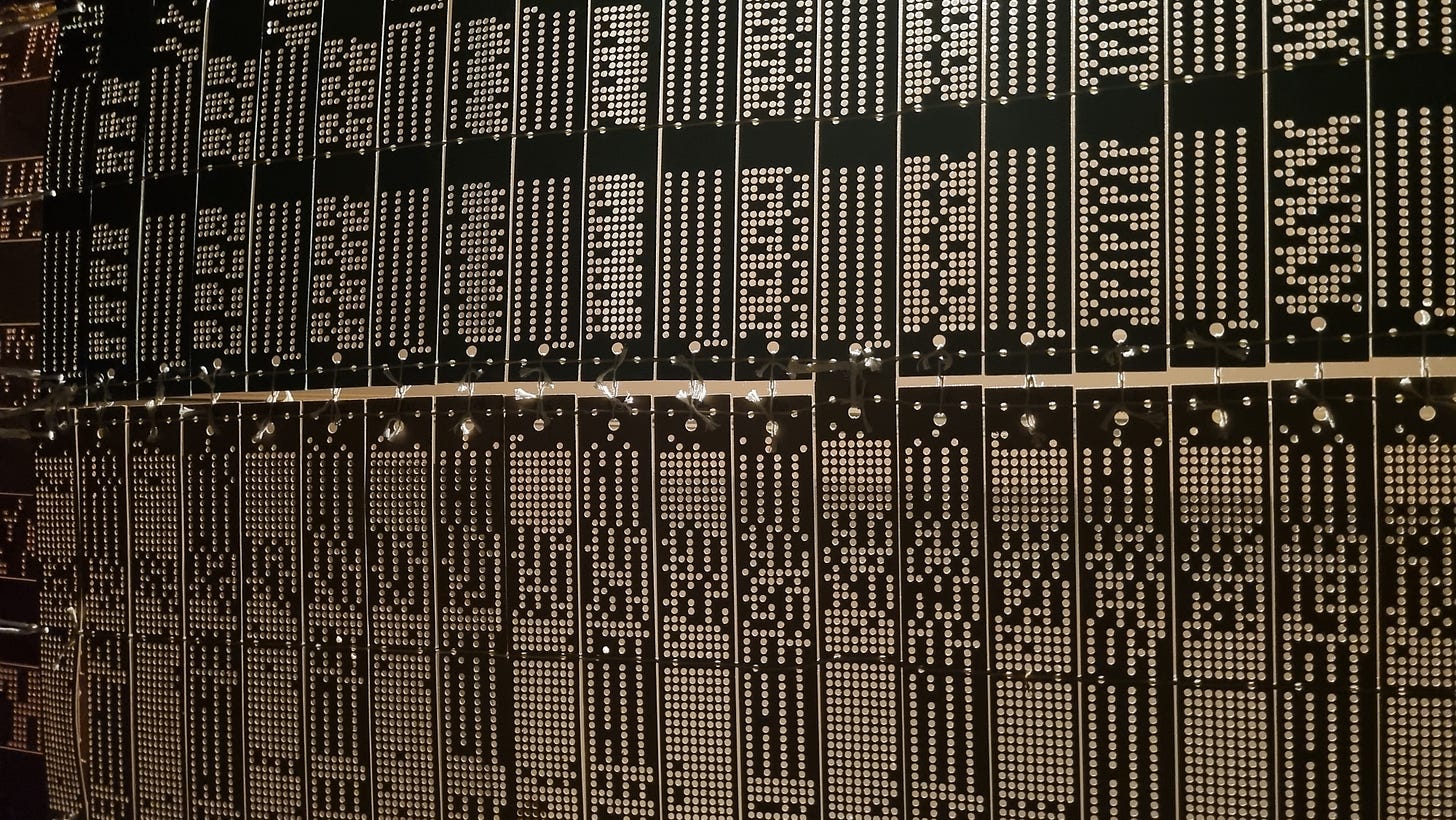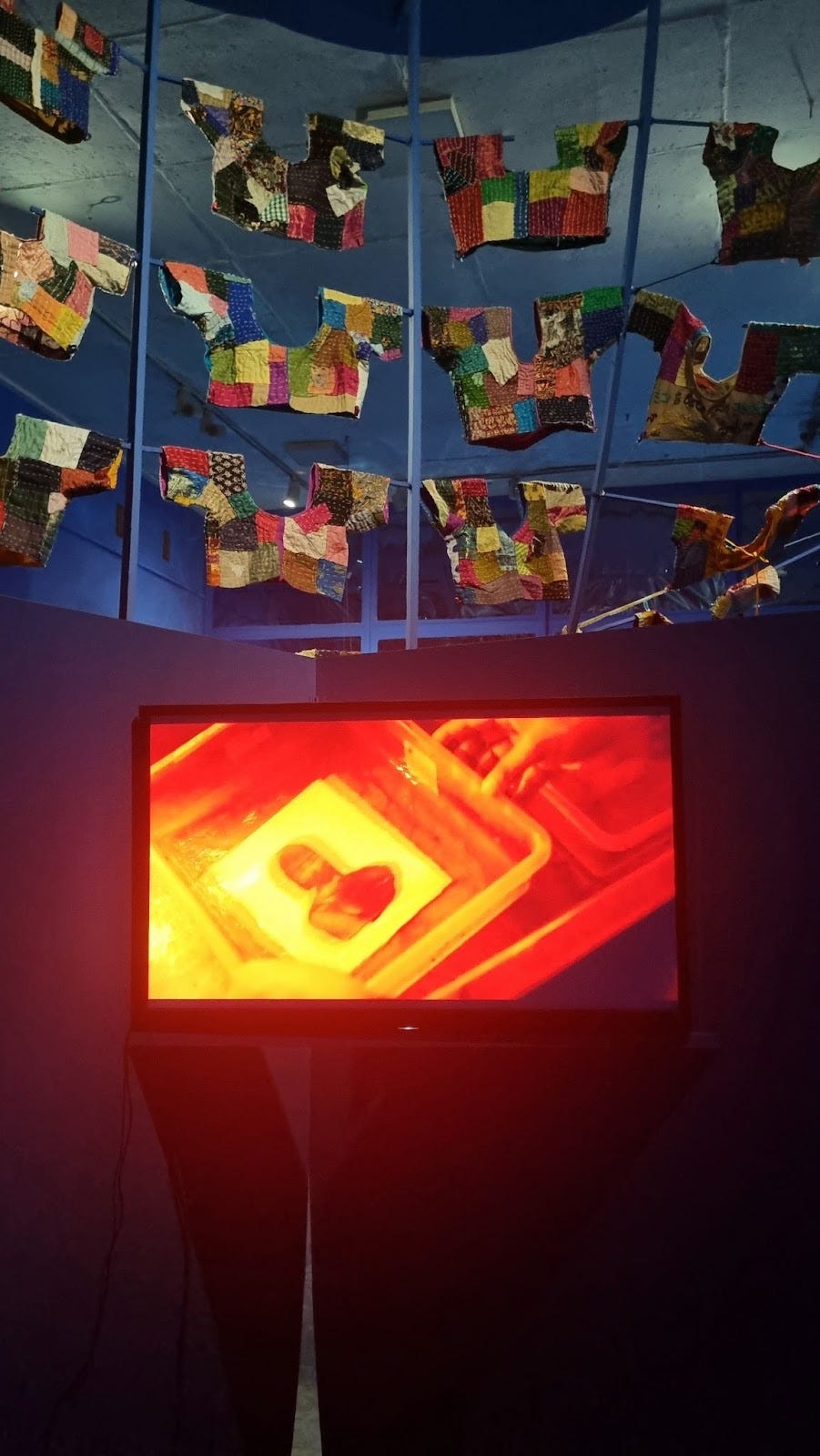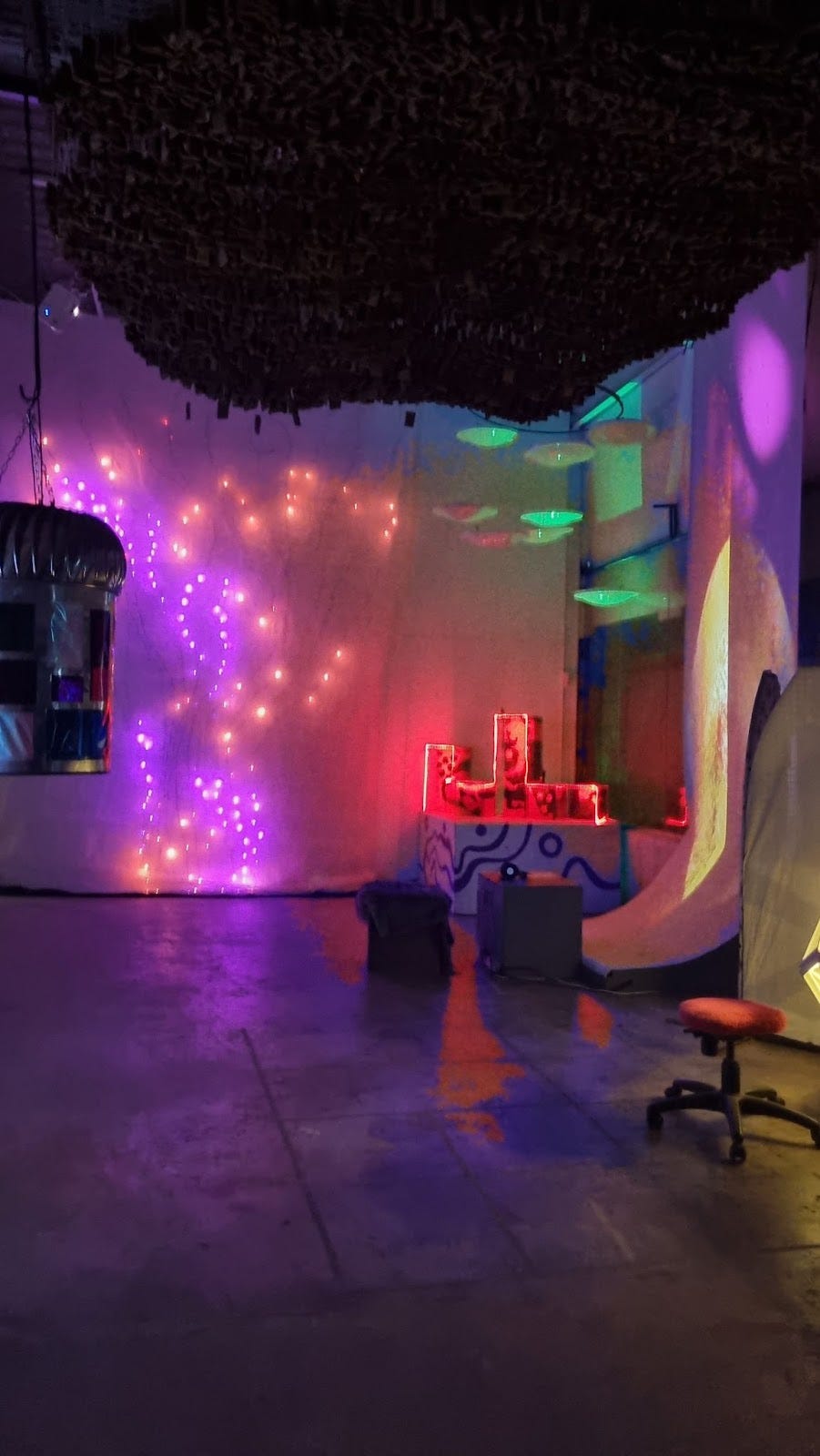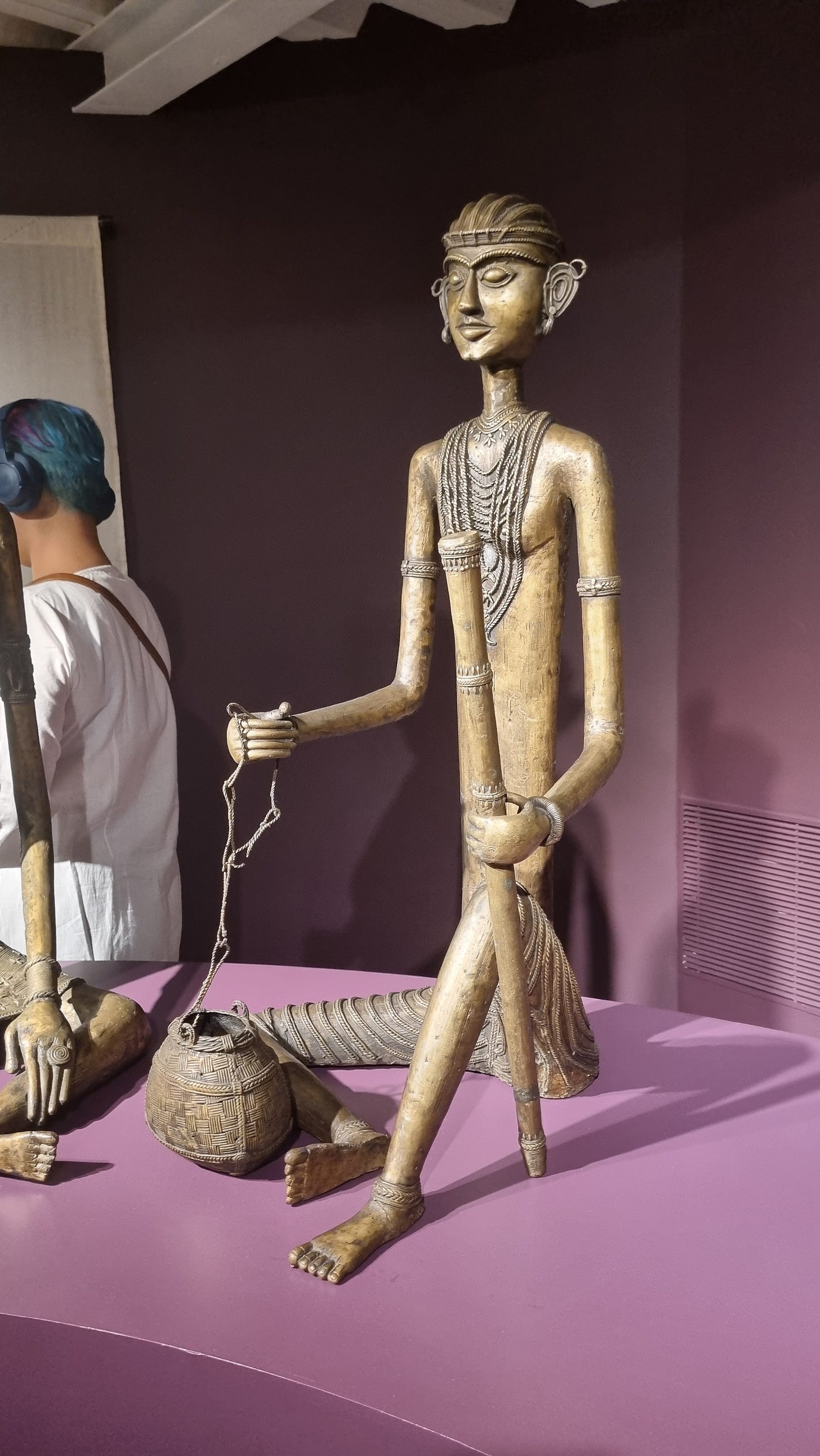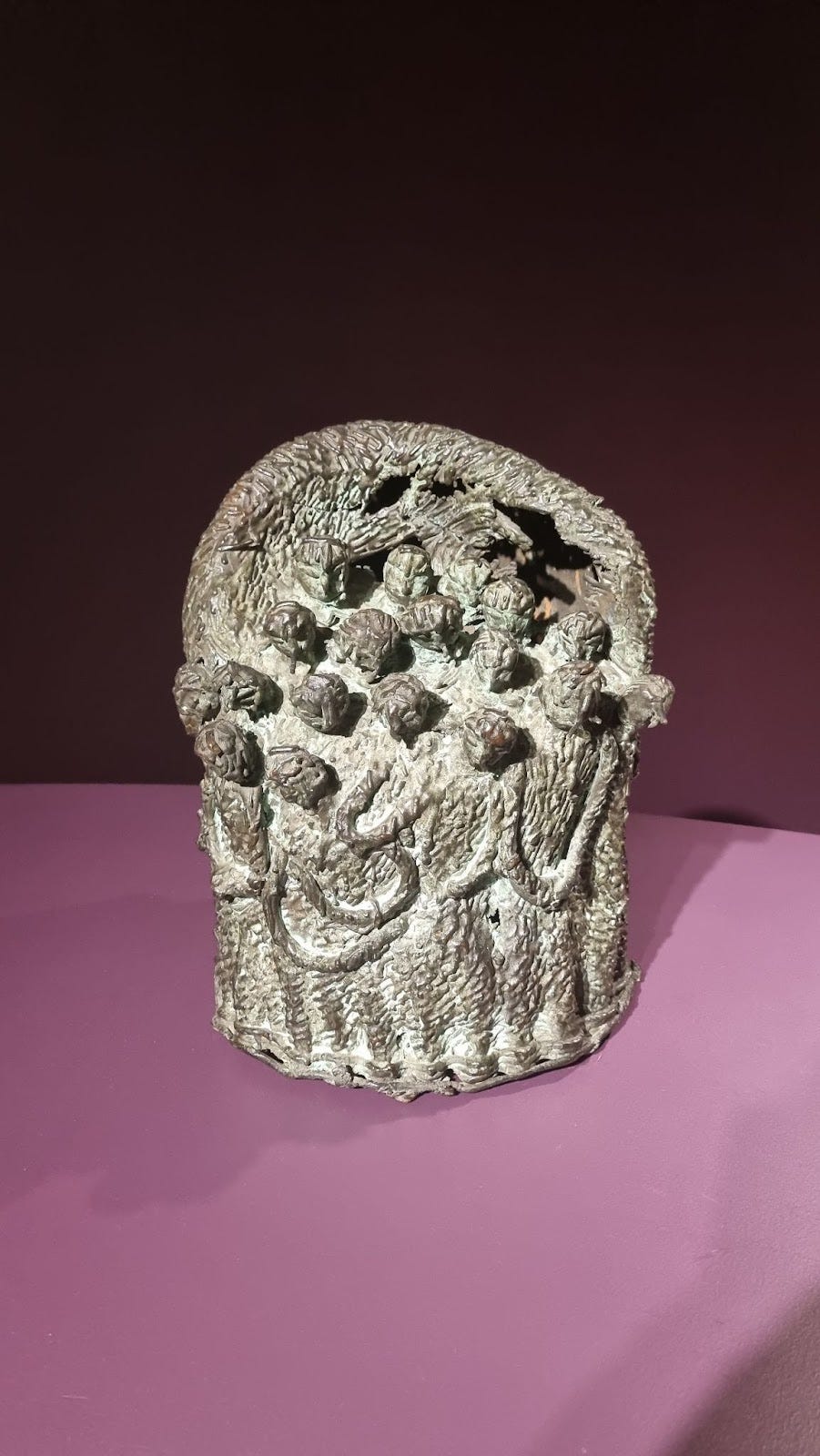April was a good month for art. I saw so many shows that I could take my pick, and chose to write about those few that lingered. Good art lingers.
The unlikely source of modern computing
I started with Archana Hande’s ‘Weaving light’, which transformed the white cube of Gallery Sumukha into a dark meditative space by an installation that was more a moving enigma than a structure.
The walls and the roofs of these temporary spaces were made of Jacquard punching cards, something I recognise from the machine in the movie ‘Imitation game’ and from the Bill Gates’s biography - Early computers used the principle of Jacquard cards to compute, and that’s how he learned to code as well. Living in an IT dominated city hasn’t given me much advantages in terms of learning tech jargon though. The cards were originally used for weaving, and was collected from artisans who have migrated to Bangalore.
Understanding the origins of modern computing was core on my mind before I stepped into Gallery Sumukha but after I stepped in, I was more fascinated by the pixels and patterns of light that were thrown onto the walls by the lights set to a timer, and thinking about computers became the last thing I wanted to do. Yet the light patterns themselves were like the points on a semiconductor chip, speaking a language of 1s and 0s.
Part 2 of the exhibition came a few days later, where the timer had been removed, and a section of the wall had bulletin boards (As seen on Project Runway/textile studios) with interesting tidbits from Bangalore’s textile history along with a few collected souvenirs. Here we read about the story of Bangalore silk or Parachute silk used in World War I & II, Katori Blouses for women produced by a male-dominated textile industry, the origin of Binny mills which brought in a wave of industrialisation in the city - indicating that textile had a huge role to play in the development of Bangalore city.
While I appreciated the history lesson, my inner child was more drawn to the pretty patterns of light and how they moved over myself and the visitors, and the calming allure of a dimly lit space that allowed one to decompress.
On Leisure by Indu Antony
Picking up the thread of blouses and textile, there was a show called ‘The State of Fashion Biennale’ at 1Shanthiroad Studio/Gallery, again where the white cube was transformed into an electric blue space. Here we saw Indu Antony’s work - of women at leisure. Indu Antony is an artist from Bangalore and has a teriffic imagination and a way of simplifying what she’s trying to say through her work. This time my context was laid by an Instagram account that featured photographs of women at leisure. In the spirit of this, Indu and her team had established a space called ‘Namma Katte’ in the neighbourhood of Lingrajapuram, where the local women can gather and rest and work on leisurely things. One such project was the blouses - which Indu had hung in an ambiguous shape akin to a clothesline perhaps.
Knowing the particular importance my grandmother and mother had for how their blouses were stitched, their endless back & forth with the tailor on the measurements, I could relate to the communal act of making these blouses and how they constituted to be a form of ‘leisure’. Here I was, a woman of leisure in an art gallery, looking at the work of other women who were also indulging in leisure. It was a good time to be a woman, at that moment.
New media in New Yelahanka
Yelahanka is still sometimes known as Yelahanka New Town, a suburb of Bangalore, because it was one of those microcities that was planned and developed, but remained on the outskirts as a ‘New Town’ for the rest of us Bengalureans. It’s about 20 kms away from my house, and I’d resisted checking out the art shows there because of the distance and the lack of seamless transportation. But friends from Mumbai were visiting so I recommended they see the show, and that I’d accompany them.
The show was called ‘Lost in BLR’ , a new media show themed on the city of Bangalore. The intrigue grew. Unusual but not unwelcome, the show had an entry fee of 400 INR. We bought the tickets on bookmyshow, again unusual practice for an art show to be listed in a platform where ‘event listings go to die’, and wasn’t really used by the art community.
The show was housed in Bangalore Creative circus, a large warehouse space which looked like the set of a kids TV show one watched while growing up in the 90s. The show was set off to the side, in a sort of narrow space where the works were jostled up against each other, having much to do with each other.
I saw the show twice, and my first time, the artists were hanging around and were kind enough to get into all the jargon - there was an installation of a ‘lamp’ that lit up an infinity room once you blew into a sensor, there was a sound installation with visuals tied to emotional reactions to the sounds of Bengaluru, another screen upon which another sensor let you paint images onto it with a giant paint brush, unveiling a movie from the streets of the city. My favourite was a giant sensor that projected what looked like the tentacles of a flower onto the floor that moved as one moved, kind of. I say kind of because it wasn’t always easy to tell if the sensor was working.
The final works I saw was on the current state of the lost Vrishabhavathi river of the ciy, and I was thankful to the show for bringing the river back into my notice again. It had been a childhood joke, people would ask you to go to the Vrishabhavathi river, knowing it was a river just outside the city wrecked by drainage dumped by humans. I wonder why it was so funny back then.
My second time seeing the show was really underwhelming as most of the sensors weren’t working. Disappointed, we left the show in 10 mins, whereas we’d spent almost an hour the first time around. But I guess the risk of running a new media show is also running into problems that traditional art shows don’t face - like broken tech or power cuts.
Poetry in bronze
If there is one show you can still see out of this list, it’s this jaw droppingly beautiful show. MAP is a museum space, so their shows rotate out every few months, so I hadn’t sat down to reflect on any single one of them, on account of seeing the same show multiple times over many months - too much exposure, and hence taken for granted. This new show, for whatever reason, caught my eye and I am grateful for that.
A darkly purple room invites one to the world of Bastar-Dhokra from the region of Chhattisgarh, a type of sculpture I didn’t know existed. It’s a dual show of Meera Mukherjee and Jaidev Baghel called ‘Outside In’. Jaidev’s work - The first thing you sense about these works is that they’re whole - or they have been thought through. They’re intentional and they carry this sense of integrity in the space they hold. There is something pleasing about the proportions of the body, the vacant expressions of the people, the hollowed out cheeks, the delicate ornaments worn in the hair. You can tell that there’s a larger story going on, a whole world you are suddenly privy to - to that of gods & goddesses of labour, of a way of life, of a way of craft.
A helpful wall talks about the process of making these sculptures and I try my best to understand. The journey to these sculptures sonds arduous and painful, and I love the fact that Jaidev would let each artisan start and finish their work all the way through, and did not piecemeal it like Ford at his factories.
A film (again well made) shows the sculpture workshop and them working on a piece, a horse-like creature, displayed at the museum showing an in-between phase of making the sculpture. The stunning tree of life, with small birds carved on its branches is really the piece-de-resistance, and most museum visitors including me were gasping by this point.
Meera’s work, albeit quieter and less regal when compared to Jaidev’s, had more varied things to say. Her work Ratha Yaathra took me back to the giant chariots that were heralded in temples once a year, the people teeming around, and her work Mother and child put me in a rather maternal mood I couldn’t wait to get out of (28 and kids, in this economy?!) and the sculpture Rain reminded me of why I love art, and why I seek it, and how it makes me feel - like a bunch of atoms that have lost their center and are dancing in the universe. And props to the exhibition designer and lighting designer, who really gave the show everything it needed.
I’ll be seeing it again before it closes, and drooling over the sculptures (not literally, don’t ban me) and wishing I could own a Mahua tree sculpture in my house.
I ended my bout at MAP by watching a contemporary dance performance by Diya Naidu and team and was moved in completely different ways by the 40 minute performance. I made a mental note to attend more contemporary dance performances, noting the bodily effects this artform has on me over the mental ones observed in a gallery.
That was April in the arthalls of Bangalore for me, and my thirst was temporarily quenched. I sometimes wonder what’ll happen if I move to a city like London with over 40 art openings every weekend and how quickly I’ll lose my head over it. The number of shows I saw in April in Bangalore was the sweet spot, exactly how much my prefrontal cortex could digest. I’ll leave links to the galleries and museums so you can hit them up the next time as well. For now, adieu.
Links - Gallery Sumukha, 1Shanthiroad studio/gallery, Bangalore Creative Circus, Museum of Art & Photography




